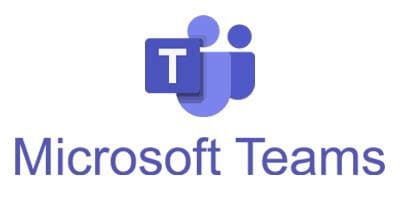How To Install Microsoft Teams on Fedora 42

Microsoft Teams has become an essential collaboration tool for organizations worldwide, enabling seamless communication through chat, video calls, file sharing, and integration with other Microsoft services. For Linux users running Fedora 42, accessing Teams presents unique challenges, but several viable solutions exist. This comprehensive guide explores multiple installation methods, optimization techniques, and troubleshooting tips to ensure you get the best Teams experience on your Fedora system.
Understanding Microsoft Teams Support on Linux
Microsoft’s relationship with Linux has evolved significantly over the years. In December 2019, Microsoft launched its first native Teams client for Linux, marking a significant milestone as “the first Microsoft 365 app coming to Linux desktops”. This demonstrated Microsoft’s commitment to supporting mixed environments across their cloud and productivity offerings.
However, by late 2022, Microsoft shifted its strategy toward progressive web applications (PWAs). They announced that the PWA would provide Linux users with “access to more capabilities, including custom backgrounds, gallery view, reactions, the raise-a-hand feature in meetings, as well as large gallery and Together mode views”. This strategic shift means Fedora users now have several options for accessing Teams, each with distinct advantages and limitations.
Current Teams Options for Fedora 42
- Progressive Web App (Microsoft’s currently recommended approach)
- Web browser interface
- Third-party clients
- Legacy RPM package (with limited support)
Prerequisites for Installing Teams on Fedora 42
Before proceeding with any installation method, ensure your Fedora 42 system meets these requirements:
- Updated system packages:
sudo dnf update -y && sudo dnf upgrade -y - RPM Fusion repositories for additional codecs:
sudo dnf install https://mirrors.rpmfusion.org/free/fedora/rpmfusion-free-release-$(rpm -E %fedora).noarch.rpm https://mirrors.rpmfusion.org/nonfree/fedora/rpmfusion-nonfree-release-$(rpm -E %fedora).noarch.rpm - Compatible web browsers (for web/PWA methods):
- Google Chrome or Chromium
- Microsoft Edge
- Mozilla Firefox
- Consider your desktop session type: Teams has historically experienced screen sharing issues with Wayland, so an X11 session might provide better compatibility.
Method 1: Installing Microsoft Teams via Official Repository
While Microsoft has shifted focus to web-based solutions, some users still prefer the desktop client. Here’s how to install it using the official repository:
- Create a repository file:
sudo nano /etc/yum.repos.d/microsoft-teams.repo - Add the following content:
[Teams] name=teams baseurl=https://packages.microsoft.com/yumrepos/ms-teams enabled=1 gpgcheck=1 gpgkey=https://packages.microsoft.com/keys/microsoft.asc - Save and exit the editor
- Update package cache:
sudo dnf update - Install Teams:
sudo dnf install teams - Launch Teams from your application menu or by typing
teamsin the terminal
If the Teams client doesn’t launch properly, you might need to run it with the --no-sandbox parameter due to compatibility issues with newer versions of glibc:
teams --no-sandboxTo make this a permanent solution:
mkdir -p "${XDG_DATA_HOME:-$HOME/.local/share}/applications"
cp -a "/usr/share/applications/teams.desktop" "${XDG_DATA_HOME:-$HOME/.local/share}/applications/teams.desktop"
sed -i -e 's,teams %U,teams --no-sandbox %U,' "${XDG_DATA_HOME:-$HOME/.local/share}/applications/teams.desktop"For autostart configuration:
sed -i -e 's,teams %U,teams --no-sandbox %U,' "${XDG_CONFIG_HOME:-$HOME/.config}/autostart/teams.desktop"Note that using the --no-sandbox option comes with security implications.
Method 2: Using the Web Version
The web version offers the most up-to-date features and is often more reliable than the desktop client for Linux users:
- Open Chrome, Edge, or Firefox
- Navigate to https://teams.microsoft.com
- Sign in with your Microsoft account or organizational credentials
- Allow permissions for camera and microphone when prompted
For optimal performance:
- Ensure your browser is updated to the latest version
- Configure proper permissions for camera and microphone access
- Consider using Chrome or Edge for the best experience, as Firefox sometimes has limitations with Teams functionality
Many Fedora users report success with the web version: “I use it for work all the time when working from home. I use MS Edge beta and everything works fine”.
Method 3: Setting Up Teams as Progressive Web App
The Progressive Web App (PWA) approach offers a desktop-like experience while maintaining the advantages of the web version. Microsoft officially recommends this method for Linux users.
To install Teams as a PWA:
- Open Chrome or Edge and navigate to https://teams.microsoft.com
- Sign in to your Teams account
- Look for the install icon in the address bar (+ icon) or the menu option “Install Microsoft Teams”
- Click Install and confirm the installation
Benefits of the PWA include:
- Desktop integration with system notifications
- App icon in your application launcher
- Automatic updates alongside the web version
- Reduced browser clutter (Teams runs in its own window)
One user explains: “I use the progressive web app version and as long as you setup the permissions right it works fine”.
Method 4: Using Third-Party Clients
For those who prefer alternatives, community-maintained options are available:
Teams for Linux via Flatpak
- Ensure Flatpak is installed:
sudo dnf install flatpak - Add the Flathub repository if needed:
flatpak remote-add --if-not-exists flathub https://flathub.org/repo/flathub.flatpakrepo - Install Teams for Linux:
flatpak install flathub com.github.IsmaelMartinez.teams_for_linux - Launch from your application menu or via:
flatpak run com.github.IsmaelMartinez.teams_for_linux
Users report varying levels of success with this approach: “I’ve had some success with flatpak https://flathub.org/en-GB/apps/com.github.IsmaelMartinez.teams_for_linux but always had to connect to a meeting from the teams calendar”.

Optimizing Teams Video and Audio Settings
Regardless of your installation method, proper audio and video configuration is essential for a good experience.
Camera Configuration:
- Test your camera before important meetings
- If your camera appears upside-down (a known issue on some Linux laptops), you may need to use external tools to flip the video
Microphone Setup:
- Verify your microphone works in Fedora’s sound settings
- Set the correct input device in Teams settings
- Test microphone levels to ensure proper volume
Audio Connectivity Issues:
- Some users experience audio connection problems with Teams on Linux
- If using Snap or Flatpak versions, you may need to connect audio interfaces manually:
snap connect teams-for-linux:audio-record :audio-record
Screen Sharing Configuration
Screen sharing in Teams on Linux requires special attention, particularly regarding your desktop session:
For Wayland Users
Screen sharing on Wayland has historically been problematic with Teams. If you encounter issues:
- Consider switching to X11 for greater compatibility:
- Log out of your current session
- Click the gear icon on the login screen
- Select “Plasma (X11)” or “GNOME on Xorg”
- Log back in
- If you prefer staying on Wayland:
- Firefox may provide better screen sharing support on Wayland
- Ensure PipeWire is properly configured
As one user notes: “For me Teams works fine on Firefox flatpak under Wayland, including screenshare”.
For Chrome/Chromium Users
If experiencing screen sharing issues:
- Check the PipeWire flag:
- Open
chrome://flags/#enable-webrtc-pipewire-capturer - Ensure it’s enabled
- Open
- Grant proper permissions when prompted
- If problems persist, try Microsoft Edge: “I’m currently using Microsoft Edge in a flatpak just for Teams. Everything seems to work. Including the background filters like blurring”.
Managing Teams Meetings on Fedora 42
For effective meeting management:
- Join meetings early to troubleshoot potential issues
- Calendar integration options:
- Use the Teams calendar for reliable meeting connections
- Configure browser notifications for upcoming meetings
- For persistent meeting problems:
- “Try using Firefox in private mode to join meetings”
- Clear browser cache and cookies
- Verify network connectivity and firewall settings
Troubleshooting Common Issues
Cannot Connect to Meetings
If you receive “Sorry, we couldn’t connect you” messages:
- Try a different browser – many users report success with Firefox when Chrome fails
- Check network connectivity and firewall settings
- Clear browser cache and cookies
- Verify camera and microphone permissions are properly configured
Black Screen or Teams Not Opening
If Teams shows only a black screen or fails to launch:
- For desktop client users, try the
--no-sandboxparameter as described earlier - For web users, try a different browser
- Check system resources – Teams can be resource-intensive
- Verify your graphics drivers are up-to-date
System Crashes
Though rare, some users report entire system crashes when using Teams, particularly during screen sharing. If you experience system instability:
- Consider using the web or PWA version instead of the desktop client
- Monitor system resources during Teams usage with
htop - If using multiple monitors and experiencing freezes, try disconnecting external displays: “I have learned I am able to recover by unplugging the additional monitor, and then teams became responsive after a few seconds”
Performance Optimization
Optimize Teams performance with these strategies:
- Resource management:
- Close unnecessary applications and browser tabs
- Monitor memory usage with System Monitor or
htop - Consider adding RAM if you frequently use Teams alongside other resource-intensive applications
- Browser optimization:
- Regularly clear cache and cookies
- Disable unused extensions
- Enable hardware acceleration when available
- Network optimization:
- Use wired connections for stability
- Limit bandwidth usage from other applications during important calls
Security and Privacy Considerations
When using Teams on Fedora, consider these security aspects:
- Authentication is handled identically across platforms with support for multi-factor authentication
- Data encryption protects information in transit and at rest
- Permission management requires careful attention:
- Review and manage browser permissions
- Be cautious about granting persistent camera/microphone access
- For corporate environments, the Teams PWA can be used with Conditional Access configuration through Endpoint Manager
Keeping Teams Updated on Fedora 42
Maintaining an updated Teams installation ensures you have the latest features and security patches:
For Repository Installation:
sudo dnf update teamsFor Flatpak Installation:
flatpak update com.github.IsmaelMartinez.teams_for_linuxWeb/PWA users benefit from automatic updates whenever accessing Teams.
Congratulations! You have successfully installed Microsoft Teams. Thanks for using this tutorial for installing Microsoft Teams on your Fedora 42 Linux system. For additional help or useful information, we recommend you check the official Microsoft website.